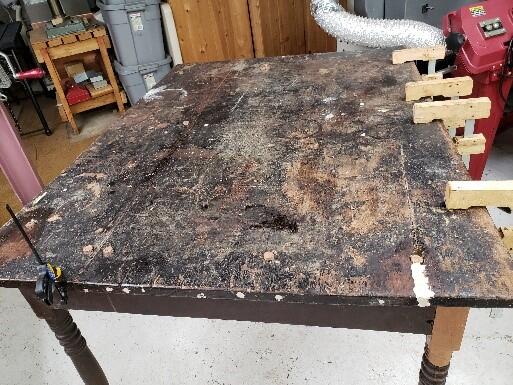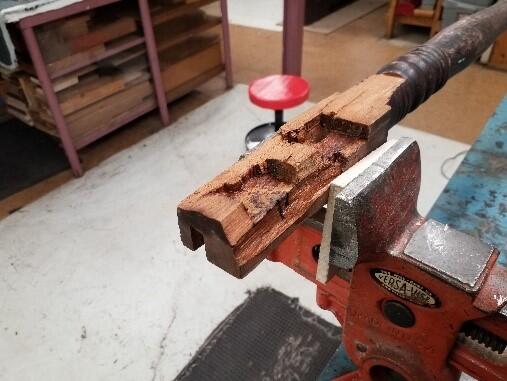
The work of restoring historical furniture, buildings, and other items is often detailed and meticulous. Conservators must recognize materials, construction techniques, and surface preparations used in a historical object and then use specialized tools – often small tools like those a dentist uses – and sometimes chemical treatments to uncover the item’s original features and appearance. Research is often an essential first step to identify an item and help tell its story. Knowledgeable and highly skilled artisans are needed to undertake the intricate and detailed work of restoring and preserving important expressions of America’s heritage.
Meet Mark Gervasi. Mark has more than 34 years of experience working to conserve historical buildings, furniture, decorative arts, and other objects for institutions such as the Henry Ford Museum, the Edsel and Eleanor Ford House, and Fair Lane, the Home of Clara and Henry Ford. The Americana Foundation connected with Mark through grants that support restoration and conservation efforts at Fair Lane.

Mark and other conservation experts have become increasingly concerned that cultural institutions will be unable to find qualified conservation staff to help identify, preserve, and restore significant historical items. Recognizing this concern, Fair Lane used a 2017 grant from The Americana Foundation to create a fellowship that equips new conservators with the hands-on craft skills and heritage arts needed for conservation work. Fair Lane used the grant to hire Tamsen Brown as a fellow to work on Fair Lane’s interior restoration under Mark’s leadership. Tamsen, who previously received her a master’s degree in Conservation Studies from West Dean College in the United Kingdom, has assumed a leadership role and is now overseeing the management of Fair Lane’s conservation department.

Mark intends to continue leveraging his conservation skills and knowledge for the benefit of the conservation field. Fair Lane used resources from a 2018 grant from Americana to create a pilot project that enables Mark to provide conservation consulting services and conservation training free of charge to small institutions that lack resources for conservation staff. He conducts site visits to assess an organization’s collections and buildings and recommends conservation activities and training based on the organization’s capabilities and resources. During the pilot project, Mark has visited historical societies in Dearborn, Romeo, Port Huron, and Port Sanilac and has connected with numerous other small museums and institutions. In Fall 2019, Mark will teach an adult education course in St. Clair Shores, MI that provides an overview of antique furniture conservation and restoration techniques using objects from local museums.

Mark’s commitment to the conservation of buildings, furniture and objects that express America’s heritage is reflected in the numerous items that have been restored and now are in use or on exhibit rather than hidden in museum storage. The photos below depict a table that Mark restored on behalf of the Dearborn Historical Museum. Once in the home of Clara Snow, who founded Dearborn’s public library system and served for decades as chairperson of the Dearborn Library Commission, the table had been held in storage for years because of its condition (Photo 1). In addition to cosmetic issues, the mortise and tenon joinery had significant losses (Photo 2), causing structural instability. During the restoration, Mark used new wood to create a new mortis on two sides of the unstable leg (Photo 3), made a new drawer to replace one that was missing, removed and refitted the table top, and refinished the entire piece with new shellac (Photo 4). The museum now can include the table in exhibits that tell the history of Dearborn.
